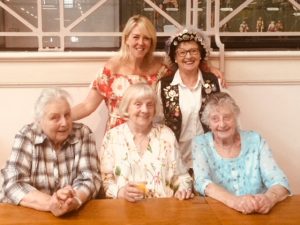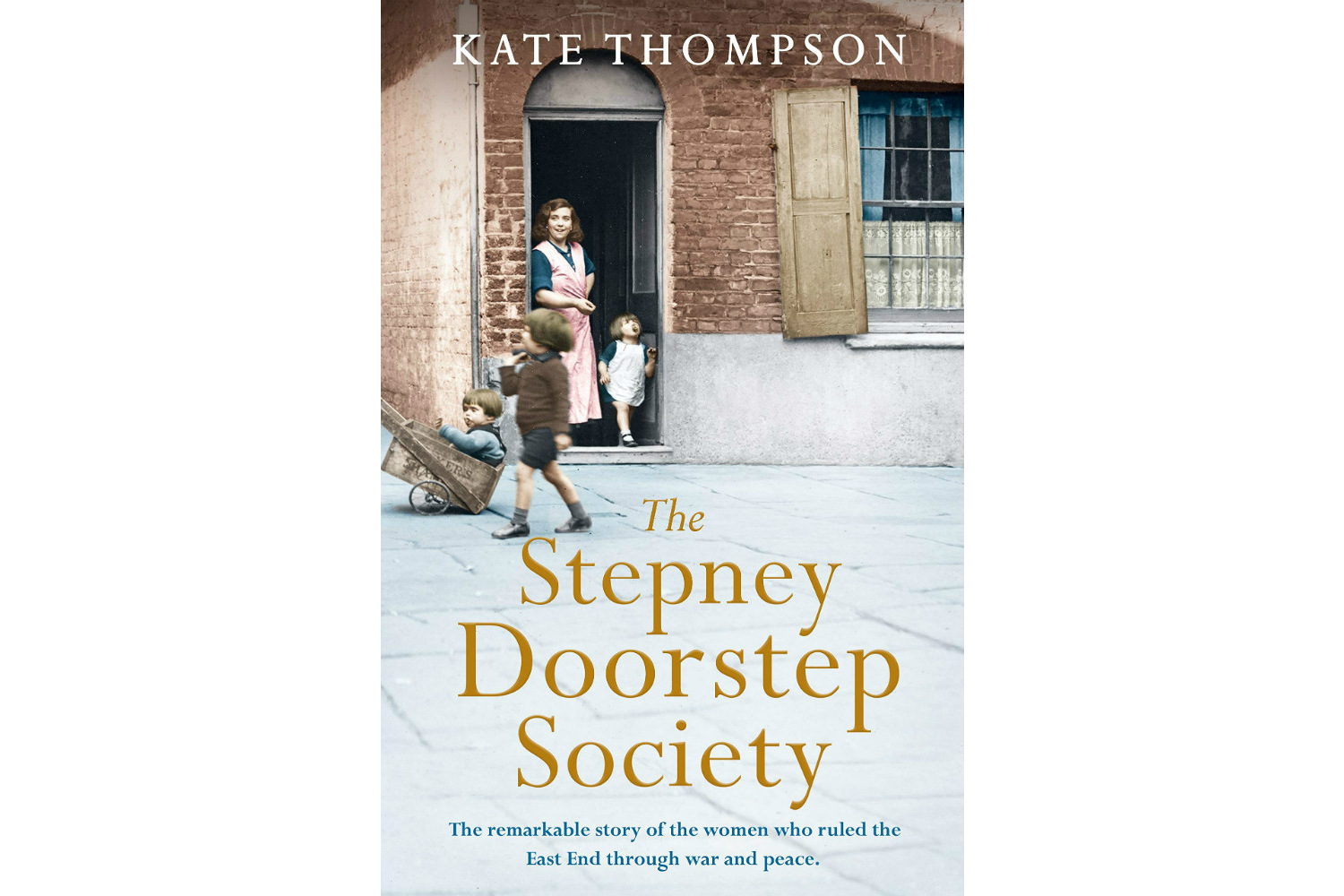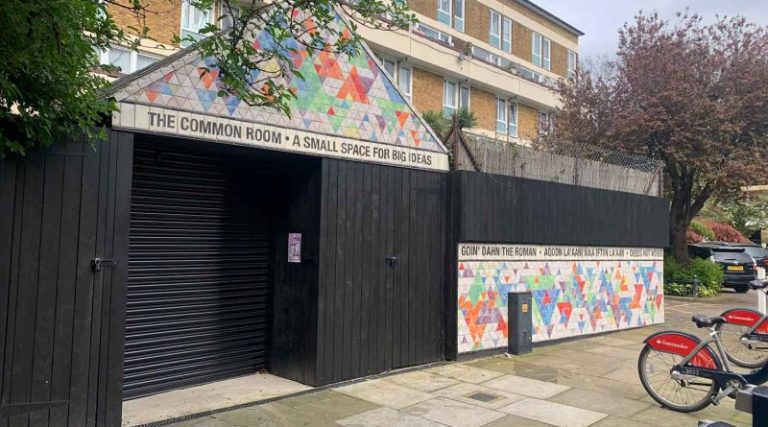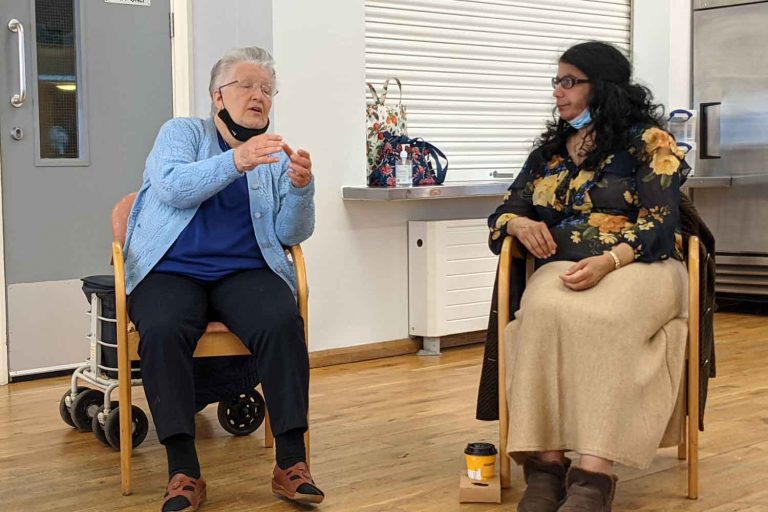The Stepney Doorstep Society by Kate Thompson, book review
The Stepney Doorstep Society, written by journalist, ghost-writer, and novelist Kate Thompson, is a must-read for anyone interested in the history of the East End, and particularly its women.
The book is clear about its intentions: ‘Teaming up with the newly launched East End Women’s Museum, we are determined to take these forgotten women by the apron strings and pull them from black-and-white into dazzling multicolour, and in doing so, pay homage to the extraordinary and instinctive way they have dealt with their lot in life. The Museum shares my goal. Put simply, to celebrate and amplify the voices of East End women. The women the history books forgot.’
And what voices they are. There are some fascinating, heart-breaking, and funny stories here, some gathered during interviews and others from research.
The first story told is that of Kate Thompson, a namesake of the author. The writer learned about her when she saw her name on the Stairway to Heaven memorial. It was researching her story which led to this book.
The memorial was created to commemorate the victims of the Bethnal Green Tube disaster in 1943, when 173 people were crushed to death in the entrance to the underground shelter in a mass panic caused by the Government testing anti-aircraft rockets in nearby Victoria Park.
Kate was born in Poplar in 1880 and moved to Bethnal Green when she married. When the landlord decided to raise the rent in their run-down tenement building in 1938, Kate and over 200 other residents formed a Tenants’ Association and refused to pay their rents until the landlord made repairs and reduced the rent to more reasonable levels.
Their strike ended in a pitched battle when the landlord attempted to visit the building with bailiffs. Leading a group of local women with the cry ‘Less rent, more repairs!’ and pelting the men with rubbish, Kate saw them off. As a result, the landlord committed to repairing the building and many more Tenants’ Associations began to spring up.

East End women were not scared of confrontation. The book tells the stories of several more feisty women who stood up to bullies in East London. Beatty Inderstein was a teenage Jewish girl from the Brunswick buildings of Whitechapel, when she and a group of anti-fascists chased Hitler supporter Unity Mitford across a park in West London in 1936.
In spite of Beatty’s youth and gender, she also played an active part in the Battle of Cable street on 4 October 1936, when 250,000 ordinary East Londoners, including Irish dockers, Jewish Londoners, socialists, and trade unionists prevented Oswald Mosley’s Blackshirts from marching through East London.
Thompson gives a powerful description of these events, including the police attempts to force their way through the crowd so that the march could continue. After Mosley was driven away, the law was changed with the Public Order Act so that marchers could no longer wear uniforms or provoke a breach of the peace.
Another vivid character whose story is told in the book is that of ‘Girl’ Walker, the daughter of a Stepney butcher (her formidable mother Alice) and a fishmonger. Girl’s boxer cousins were named George ‘The Stepney Steamroller’ and Billy ‘The Blonde Bomber’ Walker. She was quite handy with her fists herself as a child.
Little Girl was evacuated as soon as the Second World War broke out and unlike some of the other women in the book, had a traumatic experience with her temporary foster-mother who beat her and locked her in a cupboard.
Eventually Girl’s mother, Alice, came to rescue her and her sisters, striking the foster-mother in a fist-fight and defying the local police before returning with her daughters to Flamborough Street where they survived the Blitz and the hardships of the Second World War. Girl was in an Anderson Shelter that collapsed in a bombardment and was buried in it for three days before being rescued unharmed in one astonishing anecdote told in the book.
Thompson encounters saintly characters and entertaining ones too. The book tells the story of Dr Joan Martin, a young, newly-qualified female doctor working in the East End who treated casualties during the aftermath of the Bethnal Green Tube disaster and was still having nightmares about it years later. Like others affected by this appalling incident, Dr Martin was unable to speak about it to anyone else because of the importance of keeping up morale.
She went on to achieve extraordinary things in her medical career, helping many disabled children by teaching them how to swim. She was awarded an MBE in 1985. She married once, but left her husband when he asked her to stop working as a doctor. ‘Somewhere along the line, you have to make a choice. I had a marriage to medicine and it made me who I am.’
Minksy Agombar was a teenage singer during the war. She was from a musical family and she and her sisters often sang in the bomb shelters. The book gives a vivid description of a singer’s life at the time, singing music hall numbers and bantering with the audience.
Later on Minksy went to work as a seamstress in a factory where some of the girls would slip notes into the soldier’s uniforms they were making. One of Minksy’s friends even found herself a husband after sewing a note in a uniform lining that read, ‘If you’re in the mood, write to me and I’ll be in the nude.’ It’s these little details that really bring history to life in this book.
Thompson is not scared to tackle difficult topics, as shown by her recounting a German airman who landed in East London and was attacked by a group of local women, dying later in hospital. She also tells the story of a local woman who gave secret abortions to women in trouble before abortion was legalised and contraception became readily available.
The book’s goal of dazzling multicolour history is well realized. The Stepney Doorstep Society is a fascinating read. Anyone with an interest in women’s history in East London will find this book intriguing.
If you liked this article, you might like reading about Pie and Mash by Melanie McGrath






